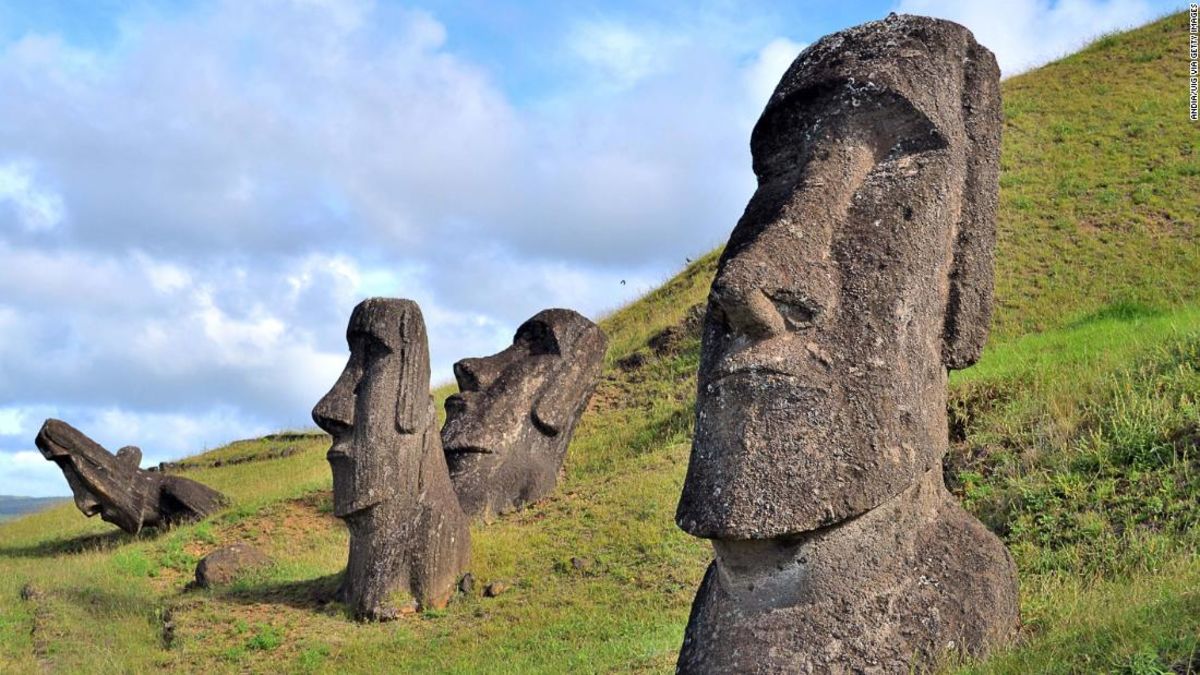
Easter Island’s stone statues may have indicated where there was fresh, safe drinking water to be found. RPBaiao/Shutterstock

Located off the coast of Chile, the survival story of early inhabitants on the tiny volcanic island of Rapa Nui has long alluded archaeologists. Now, a team of researchers believes they’ve uncovered how the ancient island population – between 15,000 and 20,000 at its peak – were able to maintain their society for centuries in the absence of an adequate supply of fresh water, and what led them to famously construct hundreds of massive statues known as moai.
Top Stories00:0601:12Find Out Where Your House Would Be At The Time OfThe Dinosaurs
An 18th-century account of European first contact with the Pacific Islanders detailed natives being able to drink seawater without harm – a feat we all know is impossible today (the human body cannot process high concentrations of seawater, eventually killing a person through dehydration). By 1887, the local population of Easter Island dropped to just 110 largely due to slave trading and disease, decimating any chance of uncovering the people’s oral history.
 The 14-ton statues were placed along the coast, which could hold a clue to how ancient inhabitants were able to survive on the dry island. Oriol Querol/Shutterstock
The 14-ton statues were placed along the coast, which could hold a clue to how ancient inhabitants were able to survive on the dry island. Oriol Querol/Shutterstock
A team of researchers conducted two field surveys across the island. With the exception of two difficult-to-access lakes and a stream that often turns to a wetland bog, they found that Easter Island does not have a substantial source of freshwater.
“The porous volcanic soils quickly absorb rain, resulting in a lack of streams and rivers,” said study author Carl Lipo in a statement.
So the team turned to the 4-meter-tall (13-feet) statues situated along the coast for guidance.
When it rains, water beneath the ground flows downhill and exits the ground where the rock meets the ocean. When tides are low, this “results in the flow of freshwater directly into the sea.” The fresh and saltwater mix to create a “brackish but potable water along the coastline” that contains low enough levels of salt to be safely consumed by humans, which the researchers think the islanders must have done.
“Although coastal groundwater sources are of poor quality, they were apparently sufficient to support the population and allow them to build magnificent statutes for which Easter Island is famous,” wrote the authors in their study published in Hydrogeology.
It’s thought the 4-meter-tall (13 foot) statues located in these areas were indicative of groundwater that was discharged, enabling early inhabitants to skim freshwater from the surface, build trenches, or create other coastal impoundments. These reserves would have helped the Rapa Nui survive periods of drought by diversifying their water source.
0 seconds of 1 minute, 39 secondsVolume 90%

However, others argue that small cisterns found on the island could have been used for collecting rainfall. Lipo argues that if collecting rainfall was central to the culture, then the cisterns would have been much larger (they only hold between 2-4 liters of water each). Furthermore, Rapa Nui only receives 1,240 millimeters of rainfall every year. Paired with the rate of water evaporation here, the cisterns would likely have only been a viable source of water for less than one-third of the year.
In their next trip, the team hopes to explore how the availability of freshwater in certain locations could be linked to how the large statues were built.
source:www.iflscience.com





